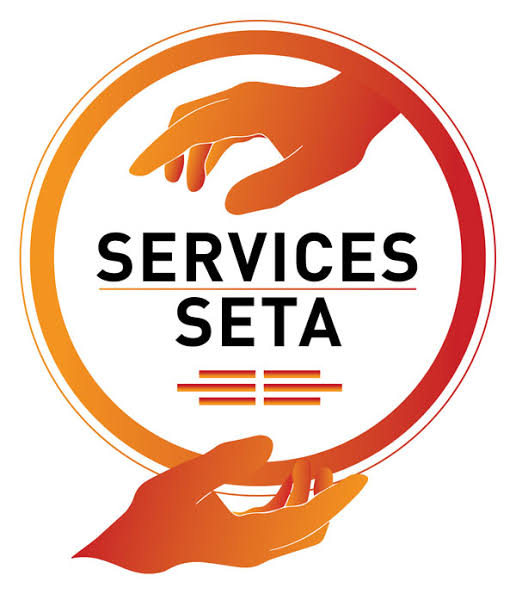Seta Applications and Stipends: A Comprehensive Guide to Funding Opportunities and Support Programs

Introduction
Getting the right funding can change everything for skills training and workforce growth. Whether you’re an organization or an individual, knowing how to apply for Seta programs could open doors to new opportunities. With the rising demand for education, job skills, and employment support, understanding Seta applications and stipends becomes more important than ever. This guide aims to help you navigate the process, so you can make the most of these valuable programs.
Understanding Seta: An Overview
What is a Seta?
Seta stands for Sector Education and Training Authority. These are government agencies responsible for promoting skills development in specific industries. They help fund training programs, support learners, and connect skills to industry needs. Setas have been around for years and continue to evolve to meet changing workforce demands.
The Purpose of Seta Funding
Seta funding aims to build a skilled workforce that meets industry standards. Their goals include helping people gain new skills, create jobs, and boost economic growth. Funding is used for various programs like apprenticeships, learnerships, and training courses across different industries.
How Seta Funding Is Allocated and Managed
Seta funds are distributed during specific cycles each year. These budgets come from government sources and industry contributions. Multiple stakeholders, including government, industries, and training providers, oversee the process to ensure funds are used effectively and reach the right projects.
The Application Process for Seta Funding
Preparing Your Seta Application
Start by gathering the necessary documents—business plans, training outlines, and proof of industry relevance. Make sure your proposal aligns with the Seta’s focus areas and strategic goals. An application that clearly shows impact and meets priorities stands a better chance of approval.
Step-by-Step Application Procedure
- Register on the Seta portal and create an account.
- Fill out the application form with accurate details.
- Upload all required documents before the deadline.
- Submit within the set timeline—missed deadlines mean missed opportunities.
- Keep track of your submission and follow up if needed.
seta website
Evaluation and Selection Criteria
Setas look for proposals that show clear benefits. They want projects that can create jobs, improve skills, and have long-term sustainability. Impact assessments and compliance with policies are key. The more you demonstrate how your project aligns with Seta goals, the higher your chances of approval.

Seta Stipends: Opportunities for Learners and Trainees
Types of Stipends Offered
Stipends cover a range of support, including financial aid for learners in technical courses or apprenticeships. Eligibility varies by program. For example, young trainees, unemployed individuals, or those from disadvantaged backgrounds often qualify for stipends in sectors like construction, health, or manufacturing.
How Stipends Support Skills Development
Financial assistance helps remove barriers, so more people can access training. Stipends can cover living costs, transportation, or training fees. Real success stories show that stipends encourage more learners to complete courses and gain real-world skills.
Application Process for Seta Stipends
- Register as a learner or trainee with the relevant Seta program.
- Submit an application form with your personal details and proof of eligibility.
- Provide necessary documents like ID, academic records, or employment history.
- Meet application deadlines carefully.
- Follow up to confirm your application has been received and is being processed.
Maximizing the Benefits of Seta Funding and Stipends
Strategic Planning for Applicants
A good start is doing a needs assessment. Understand what your industry or community requires and show how your project fills those gaps. Build strong partnerships with local businesses or training providers to boost your proposal’s credibility.
Best Practices for Successful Applications
Write clear, compelling proposals. Highlight how your project will last beyond the funding period. Show the long-term impact, like employment growth or skills development. Transparency and solid planning can make your application stand out.
Managing and Reporting on Funding
Once approved, stay compliant with all rules. Keep detailed records of expenses and milestones. Regular reports on progress and outcomes prove your project’s success. Good management and reporting show that you respect the funding and plan to deliver results.
The Impact of Seta Funding and Stipends on the Workforce
Real-World Examples of Successful Projects
Organizations like technical colleges and community groups have used Seta funds to create apprenticeships. For example, a construction company trained young workers in safety and carpentry, leading to more jobs and safer work sites.
Data and Statistics Demonstrating Outcomes
Studies show that skills programs backed by Setas have helped over 200,000 people find jobs in the last five years. Skills acquisition rates are high, and many trainees move directly into the workforce, boosting local economies.
Insights from Experts and Policymakers
Experts see Seta programs as vital for fixing skills gaps. Policymakers agree that supporting skills development through Seta helps build a stronger, more resilient economy. They emphasize continued investment to keep up with industry needs.
Conclusion
Applying for Seta funding and stipends isn’t complicated once you understand the steps. Focus on aligning your project with Seta goals, craft a clear proposal, and follow all the rules. These opportunities can give your skills or your organization a needed boost. Stay alert for upcoming deadlines and tailor your applications to stand out. Your next big opportunity might just come from a well-prepared Seta application.




